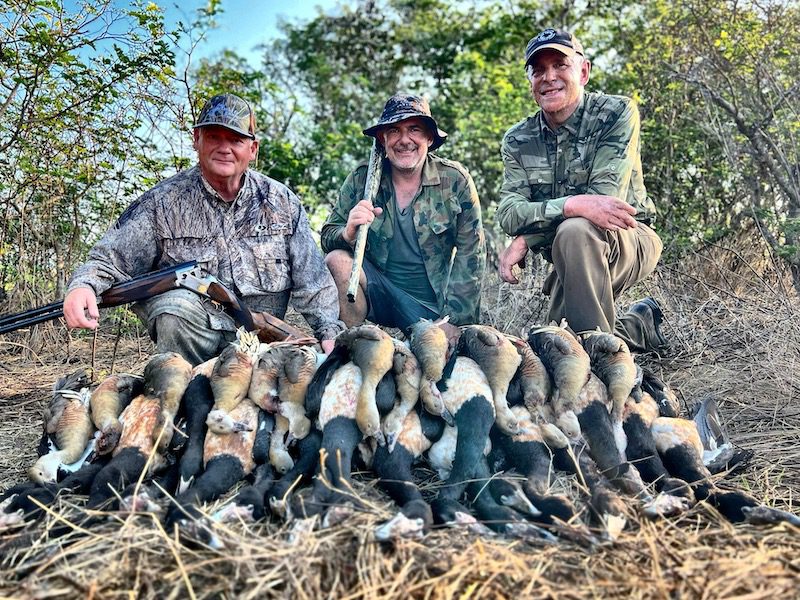Battleground: Australia Duck Hunting
Researchers and an American Hunter Race The Clock To Gather Specimens Before Waterfowl Hunting Here Is Banned

A bright orange fireball crested the eastern horizon, baking the buffalo-tracked, red-dirt landscape, wringing sweat into our shirts and ball caps like cutting a Mississippi lawn in mid-July. And it was only 6:30 a.m.
Overhead, intermittent flocks of plumed and wandering whistling ducks piercing still air with cee-dee-dee and felled by tall shots. In hand, we first-timers to the Northern Territory of Australia marveled at their beauty of extremely elongated flank feathers. But not for too long. The main event was underway. Waves of magpie geese stretching from one horizon to the next and for as far as could be seen through our sweaty eye slits. They were the reason we were here.
Magpie goose hunting is strictly a pass-shooting event. They lifted off in distance, trading between feed and water. They faintly honked like Canada geese and few at various heights over our shooting lines. Hardly anyone hunts them over water here — too many man-eating saltwater crocs. Out-of-towners, like myself, abide standard operating proce-dures. Ominous crocodile warning signs posted at property entrances plus we hear countless supper-table stories about 20-foot beasts snatching folks from boats.
Magpie geese are living fossils, representing an ancient connection between chicken-like birds and modern waterfowl. Magpie geese are about the size…Read More: Battleground: Australia Duck Hunting (PDF)
Thanks to Safari Club International‘s support, we brought along hunting videographer Justin Mueller, who produced “Battleground Australia,” that aired on GetDucks YouTube channel on January 23. The 19-minute hunting documentary importantly details the scientific value of these waterfowl spcies and of hunting to waterfowl management and to humanity worldwide.



















